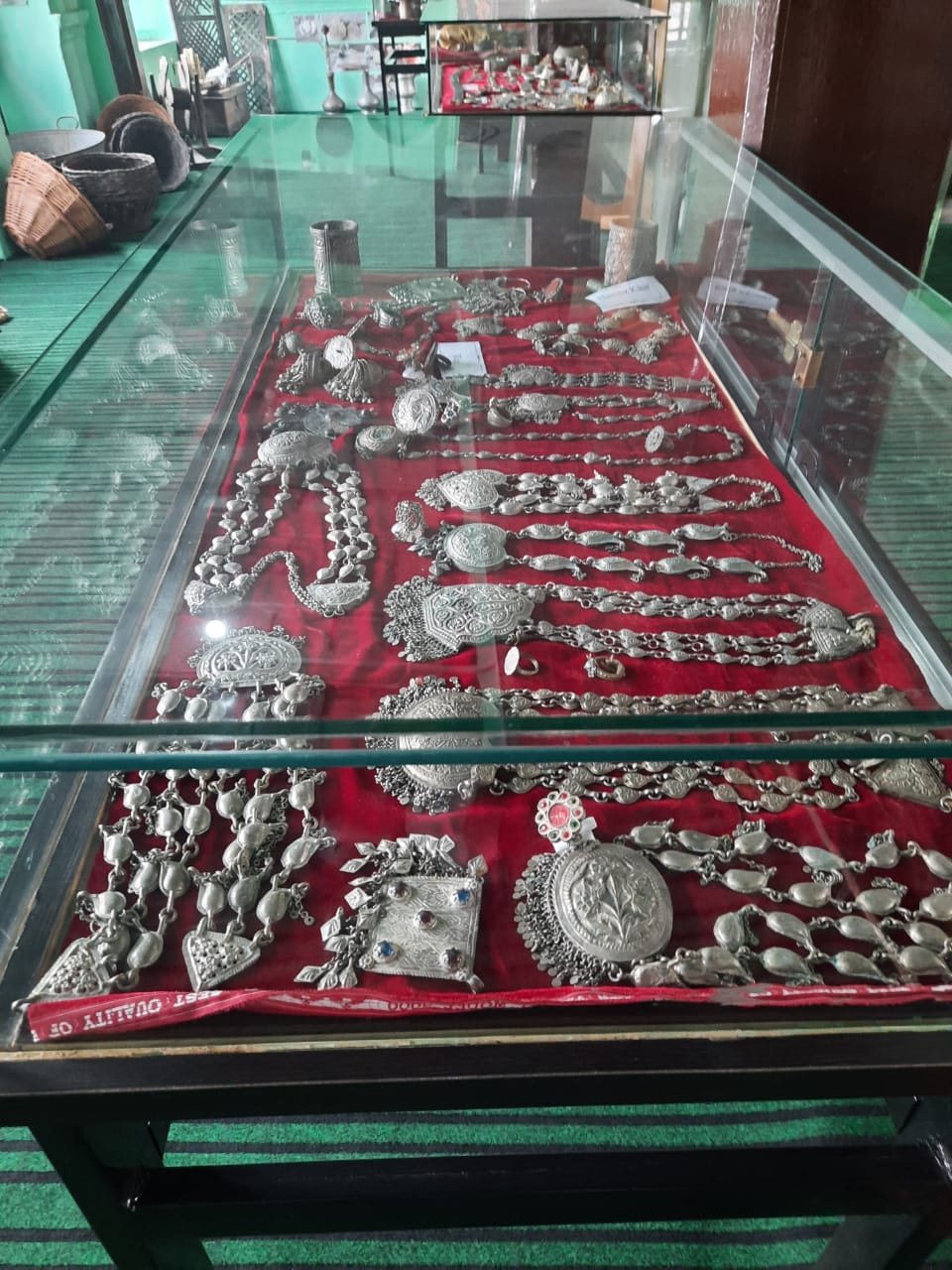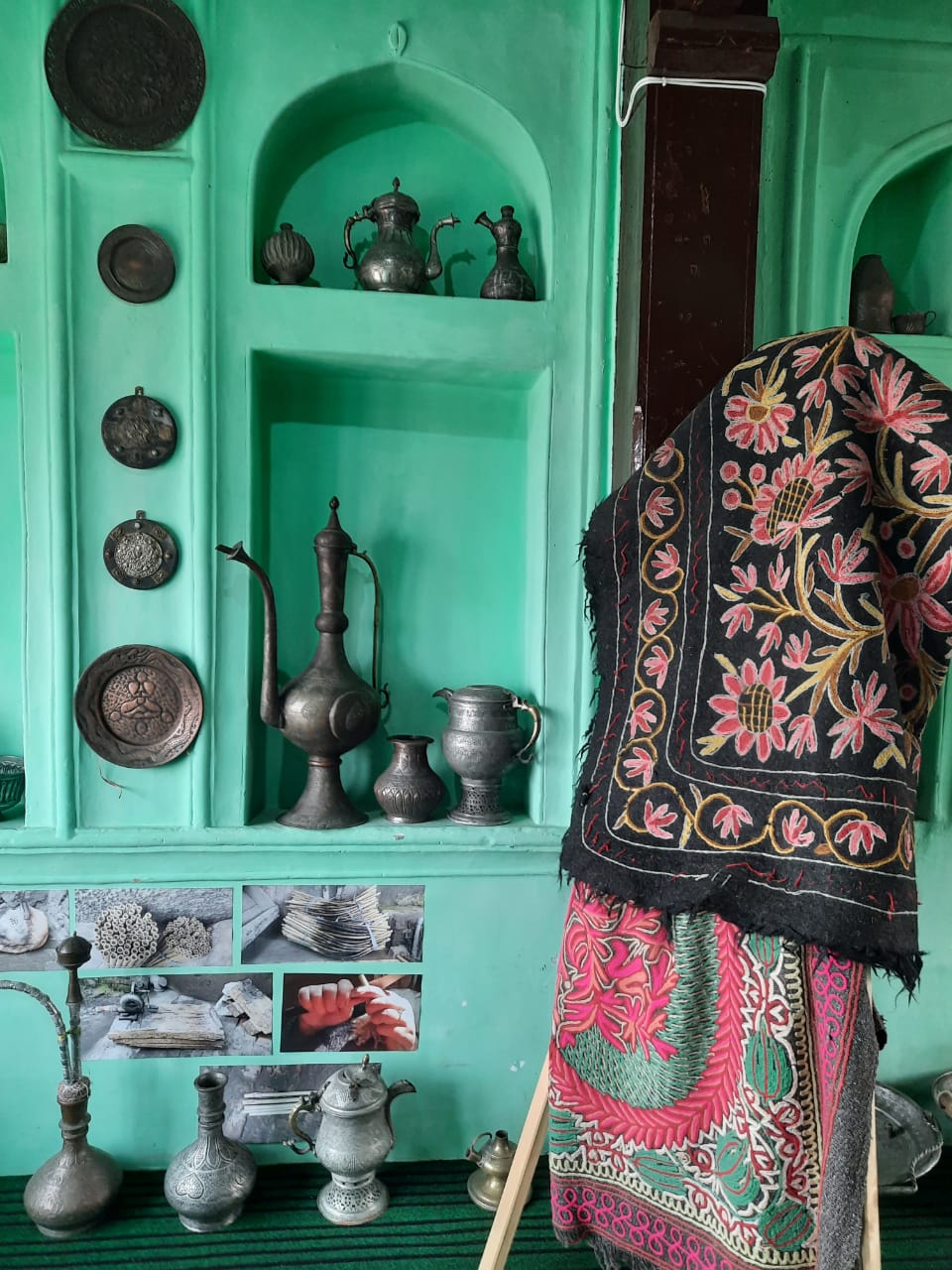
Ehsan Fazili/Srinagar
Children growing up in conflict zones miss out on learning from their surroundings. It’s to fill this gap that this 150-year-old building on the banks of River Jhelum at Ali Kadal in downtown Srinagar holds an invite to the children of the area to learn about Kashmir’s rich culture and heritage.
Known as Bait-ul-Meeras (Home of heritage in Kashmiri), the L-shaped four-story structure has set up a gallery and displayed artifacts donated by people, traditional art and craft items, and a public library, where students get to learn through storytelling and theatre workshops.
Since its inception a year ago, about 500 young Kashmiri children and women have gotten involved in the activities here to gain awareness about Kashmir’s cultural heritage. The initiative is launched by the HELP Foundation, an NGO, headed by Nighat Shafi Pandit.
 Traditional silver jewellery of Kashmir at display
Traditional silver jewellery of Kashmir at display
“Nearly 500 students, all from the downtown, are enrolled in different activities. Even during Covid restrictions, nearly 50 students were coming here,” Hakeem Javed, Coordinator on Child line at the Bait-ul-Meeras told Awaz-the voice. Children participate in activities on Friday and Hakeem hopes they would keep coming during winter vacations.
The children here first get exposure to the heritage by studying the displayed items and then working on computers.
Children from the downtown are relatively deprived of modern facilities and awareness due to the topography of the area where houses are lined on the sides of narrow lanes leaving no playgrounds. Here the HELP Foundation has also conducted a series of workshops on mental development in which 40 students and teachers from 10 schools participated.
 A old-fashioned braa Somavar on display at museum
A old-fashioned braa Somavar on display at museum
“We are reviving the culture of reading books among the children”, said Hakeem Javed.
The students who attended the theatre workshops also staged two plays in Tagore Hall on March 27. “This was a unique opportunity for the students from downtown to participate in theatre plays in the uptown,” Hakeem Javed, a big name in Kashmir’s theatre, said.
The building has a Public Library, art gallery, craft centre with carpet, and Pashmina loom spaces.
Romaisa Malik, the Coordinator, Bait ul Meeras, said they conduct workshops on calligraphy, pottery, painting, sketching, and creative writing involving women and children.
 Traditional embrioderies of Kashmir on display
Traditional embrioderies of Kashmir on displayThe artifacts are mainly from the personal collection of Nighat Shafi Pandit and Mubashir Ahmad Kathwari, a Kashmiri art lover. At least 50 to 70 percent of the artifacts including copper and silver items contributed by Mubashir A Kathwari.
The concept of HELP Foundation has been to give exposure to women and children “in the conflict zone” in the downtown and elsewhere in the Valley during the past three decades. Bait-ul-Meeras is an effort to preserve the rich traditions, art & crafts of Kashmir for the younger generation. It will also prepare the youth for the future, through awareness about the rich cultural heritage of Srinagar, in particular, built-in 6th century AD. It has also played a vital role in the establishment of CHILDLINE 1098 services in Kashmir in 2011 for the welfare of children and provided help to over 20,000 children so far.
ALSO READ: Sitaharan: Kashmir's Ramayana village awaits development, tourists
Once brimming with busy city life, the downtown has witnessed big changes following the migration of the majority of its population to the outskirts. It has, however, retained its rich cultural heritage, religious importance, and centers of arts and artisans, for which Srinagar is known the world over and designated as a part of the UNESCO creative cities network in 2021.
The Gallery, according to the Chairperson, is also a place “for the people to display their valuable collection like religious manuscripts and family inheritances”
